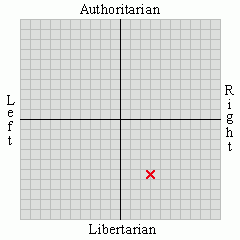A special three-judge panel of the U.S. District Court for the Northern District of California* may have just handed Governor Schwarzenegger and the Legislature a key to solving the budget crisis -- release between 36,000 to 57,000 prisoners. Less strain on the prison housing budget, less demand for prison guards -- this could save a very substantial amount of money.
Of course, the down side to the choice is that 36,000 to 57,000 criminals will be returned to the streets of California over the next 2-3 years, with an anticipated recidivism rate of something on the order of 97%. According to the Governor's office, that's the equivalent of emptying and closing seven to ten entire prisons. But if you can get past the spike in crime, this is a great solution. And the court order may be needed, because the prison guard union is simply too powerful to allow the state to take any action of its own to trim any fat out of the system as it currently exists.
Which brings to mind the question of which prisoners to release. My initial instinct is to say, "nonviolent drug offenders." But thanks to Prop. 36, that's only (!) going to get us about 14,000 or 15,000 prisoners since a lot of the nonviolent drug possession types have already been released into alternative programs. So in a couple of years -- the state is appealing this decision, for sure, but given the fact that our prisons are quite obviously bulging at the seams, something is going to have to be done -- we're going to need some alternative to keeping people locked up.
What might that alternative be? Home confinement is one choice. Thanks to GPS bracelets, it's now possible to have monitoring systems set up to make sure that a prisoner's left foot is always where it's supposed to be. Of course, enforcing that will be somewhat difficult if we can't send the prisoner back to prison -- "Stay at home, or else we shall confine you to your home again!" (Seriously, this could be offered as an incentive to prisoners who show signs of possible reformation, and staying at home, with its relative lack of male rape, racial violence, and limited access to showers and phones, is a big improvement on prison.)
Another possibility, given that the problem is overcrowding in limited facilities, is the creation of a tent prison in the desert. We've got lots of desert. The prisoners themselves can be made to build some of the confinement mechanisms (read -- moat and palisade ring surrounding the prison) and we can space out the tents pretty much as far as we want them to go. Again, selection of prisoners for this treatment is a matter that will have to be done selectively, since the confinement technique is a little bit different than in a concrete and steel structure. But Joe Arpaio confines his prisoners in a tent city down in Maricopa County, Arizona. Maybe he or some of his aides can consult with us and tell us how they keep the prisoners where they're supposed to be and control violence.
It does seem to me that the status quo of California's prisons is not acceptable. Simply cutting 60,000 prisoners loose, however, is about as far from the ideal solution as I can imagine. It could be that the prison guard union has backed the state into a corner and left no other alternative. But it could also be that we are simply suffering from a deficit of creative thought with regards to this issue.kl
* A panel which includes Ninth Circuit Judge Stephen Reinhardt, perhaps one of the most high-profile appellate judges in the entire Federal judiciary. If the name means nothing to you, then it means nothing to you, but if you recognize the name, chances are good you have an opinion of the man's work. Having argued cases before Judge Reinhardt, I will only add that whatever you think of his politics, I can attest to his keen, quick intelligence and an ability to quickly ascertain the implications of facts and arguments that are offered before him. The guy is scary smart. Evaluating what he does with those tools is something I leave to you.
February 9, 2009
Subscribe to:
Post Comments (Atom)







No comments:
Post a Comment